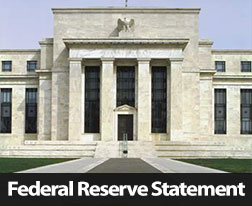 Sales of previously owned homes fell in August according to the National Association of REALTORS®. This was the first decline in sales in five months. Although not welcome news to homeowners and real estate pros, there is good news. Lawrence Yun, chief economist for the National Association of REALTORS®, as first-time buyers and moderate income families may now have an opportunity to find and buy affordable homes.
Sales of previously owned homes fell in August according to the National Association of REALTORS®. This was the first decline in sales in five months. Although not welcome news to homeowners and real estate pros, there is good news. Lawrence Yun, chief economist for the National Association of REALTORS®, as first-time buyers and moderate income families may now have an opportunity to find and buy affordable homes.
Bidding wars and slim inventories of available homes made buying a home difficult for many prospective buyers in recent months, but Mr. Yun said that these obstacles have subsided in many markets. Other obstacles contributing to a slowdown in housing markets are labor markets, which have shown some improvement, and stringent mortgage credit requirements that became effective in January.
Analysts had expected an annual sales rate of 5.20 million existing homes in August against July’s original reading of 5.15 million sales, which was later adjusted to 5.14 million sales of existing homes. August’s reading was 5.05 million previously owned homes sold.
FHFA Home Sales Show Fractional Gain in July
FHFA, the Federal Housing Finance Agency, reported that July sales of homes connected with Fannie Mae and Freddie Mac owned mortgages rose by a tenth of a percent in July on a seasonally-adjusted basis. On a year-over-year basis, home prices were 4.40 percent higher than in July 2013. It’s important to bear in mind that FHFA reports a month behind the readings reported for existing home sales in August. Another thing to consider is that FHFA readings are based on properties connected with mortgages owned or guaranteed by Fannie Mae and Freddie Mac.
First-Time Buyers Missing in Action
Falling home prices and sales volume may be due in part to a vortex of challenges facing first-time home buyers. The census bureau reports that homeownership rates have dropped for the 25-29 age groups; about 40.6 percent owned homes in 2007 as compared to 34.1 percent in 2013. The national unemployment rate for millennials is higher at approximately 9.00 percent as compared to the national unemployment rate for all workers at about 6.00 percent. Stricter mortgage rules and long-term under-employment are also impacting first-time buyers’ ability to purchase homes. The inability of would-be first-time buyers to buy homes can impact buyers and sellers at all levels of local housing markets as most sellers rely on selling their existing home to fund down payments and closing costs for their next homes.

 Last week’s economic news largely concerned the Federal Reserve’s FOMC meeting statement and a post-meeting conference given by Fed Chair Janet Yellen. The FOMC statement indicated that the Fed continued its wind-down of Treasury and mortgage-backed securities and that its purchases are expected to cease after the next FOMC meeting.
Last week’s economic news largely concerned the Federal Reserve’s FOMC meeting statement and a post-meeting conference given by Fed Chair Janet Yellen. The FOMC statement indicated that the Fed continued its wind-down of Treasury and mortgage-backed securities and that its purchases are expected to cease after the next FOMC meeting. Wednesday’s customary post-meeting statement issued by the Federal Open Market Committee (FOMC) of the Federal Reserve provided some relief to investors and analysts concerned that the Fed may soon raise its target federal funds rate. The target federal funds rate has held steady at between 0.00 and 0.25 percent since the inception of the Fed’s current quantitative easing program. The FOMC statement indicated that the committee does not expect to raise the target federal funds rate until the Fed’s dual mandate of maximum employment and reaching its target inflation rate is achieved.
Wednesday’s customary post-meeting statement issued by the Federal Open Market Committee (FOMC) of the Federal Reserve provided some relief to investors and analysts concerned that the Fed may soon raise its target federal funds rate. The target federal funds rate has held steady at between 0.00 and 0.25 percent since the inception of the Fed’s current quantitative easing program. The FOMC statement indicated that the committee does not expect to raise the target federal funds rate until the Fed’s dual mandate of maximum employment and reaching its target inflation rate is achieved. Last week’s housing related economic reports were slim, but an unexpected increase in weekly jobless claims gained attention. Analysts calmed concerns by noting that last week’s reading of 315,000 new jobless claims was not far removed from jobless claim levels before the recession. Expectations for last week’s reading were for 301,000 new jobless claims based on the previous week’s original reading of 302,000. The previous week’s reading was revised to 304,000 new jobless claims.
Last week’s housing related economic reports were slim, but an unexpected increase in weekly jobless claims gained attention. Analysts calmed concerns by noting that last week’s reading of 315,000 new jobless claims was not far removed from jobless claim levels before the recession. Expectations for last week’s reading were for 301,000 new jobless claims based on the previous week’s original reading of 302,000. The previous week’s reading was revised to 304,000 new jobless claims. Last week’s housing-related economic news was slim, likely due to the Labor Day holiday Monday. On Tuesday, the U.S. Commerce Department reported that construction spending for July increased by 1.80 percent as compared to June’s revised reading of 1.0 percent and expectations of a 1.0 percent increase for July.
Last week’s housing-related economic news was slim, likely due to the Labor Day holiday Monday. On Tuesday, the U.S. Commerce Department reported that construction spending for July increased by 1.80 percent as compared to June’s revised reading of 1.0 percent and expectations of a 1.0 percent increase for July.